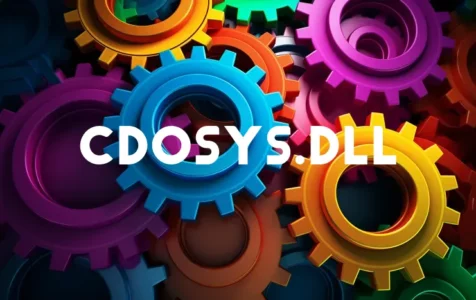Understanding the CDOSYS.DLL File
When you’re managing emails through applications, particularly in a Windows environment, there’s a good chance you might encounter the CDOSYS.DLL file. This DLL, which stands for “Collaboration Data Objects for Windows 2000 library,” is a dynamic link library file used by applications to facilitate email sending through Microsoft’s SMTP servers or through smart hosts.
Is it Safe to Use CDOSYS.DLL?
As a genuine Microsoft file, CDOSYS.DLL is generally safe to use. However, like any file on your system, it’s important to make sure that the version you have is legitimate and not a disguised piece of malware. Users should be cautious and only download or interact with DLL files from trusted sources.
Could it be a Virus or Malware?
Although the genuine CDOSYS.DLL file is not a virus, it’s possible for any file to be imitated by malicious software. An infected version of CDOSYS.DLL could potentially be harmful to your computer. Always ensure you have an effective antivirus program that can detect and neutralize such threats.
Common Issues Associated with CDOSYS.DLL
Users may encounter various issues with CDOSYS.DLL such as the file being missing, deleted, corrupted by malicious software, or registry errors within Windows. These problems might emerge during the execution of a program that relies on the file or when the system itself requires it for certain operations.
Expert Tip: For smoother PC performance, consider using a PC optimization tool. It handles junk files, incorrect settings, and harmful apps. Make sure it's right for your system, and always check the EULA and Privacy Policy.
Special offer. About Outbyte, uninstall instructions, EULA, Privacy Policy.
Fixing Issues with CDOSYS.DLL
If you’re facing issues with CDOSYS.DLL, here’s how to address them:
Finding the File
The CDOSYS.DLL file is typically included in the Windows operating system, but if it is missing, you might need to restore it. While some websites offer downloads for DLL files, you must use extreme caution. It’s always best to rely on Windows Update or system restoration methods to ensure you’re not running into security risks.
Restoring or Replacing the DLL File
If CDOSYS.DLL is missing or corrupted, you can try a system file check (SFC) scan to restore missing or corrupted system files. Open the Command Prompt as an administrator and type the command `sfc /scannow` to perform a system scan.
Alternatively, if you’re knowledgeable about system file structures, you can try manually placing the DLL file in the required directory. Again, extreme caution is advised when downloading DLL files from the internet.
Using CDOSYS.DLL in Applications
For developers wanting to use CDOSYS.DLL to send emails with attachments, Microsoft provides guidelines that can be followed in Visual Studio:
1. Create a new Console Application in Visual C#.
2. Add a reference to Microsoft CDO For Windows 2000 Library in your project.
3. Replace the code of your application with the code provided in the Microsoft documentation or examples that make use of the CDOSYS library.
For detailed steps, Microsoft’s official documentation provides a clear guide, and Visual Studio’s support web pages are also a good resource.
Community Discussions and Experiences
Many users on developer forums such as Stack Overflow and specialized programming communities like Access Programmers have shared their experiences with CDOSYS.DLL. While some have faced challenges with the file causing applications to freeze or malfunction, others have found that simple changes, such as removing MsgBox calls or adjusting the code, can resolve these issues.
If you encounter any difficulties, these forums can be a good place to look for guidance from peers and more experienced developers. However, do note that every situation is unique, and solutions that work for one person may not be suitable for another.
For those who might still be a bit hesitant or have additional questions, remember that reaching out to these communities with specific issues can yield tailored advice and troubleshooting steps.
Remember, DLL files are core components of your system software and applications. Handling them with care ensures that your computer and your software applications run smoothly.
